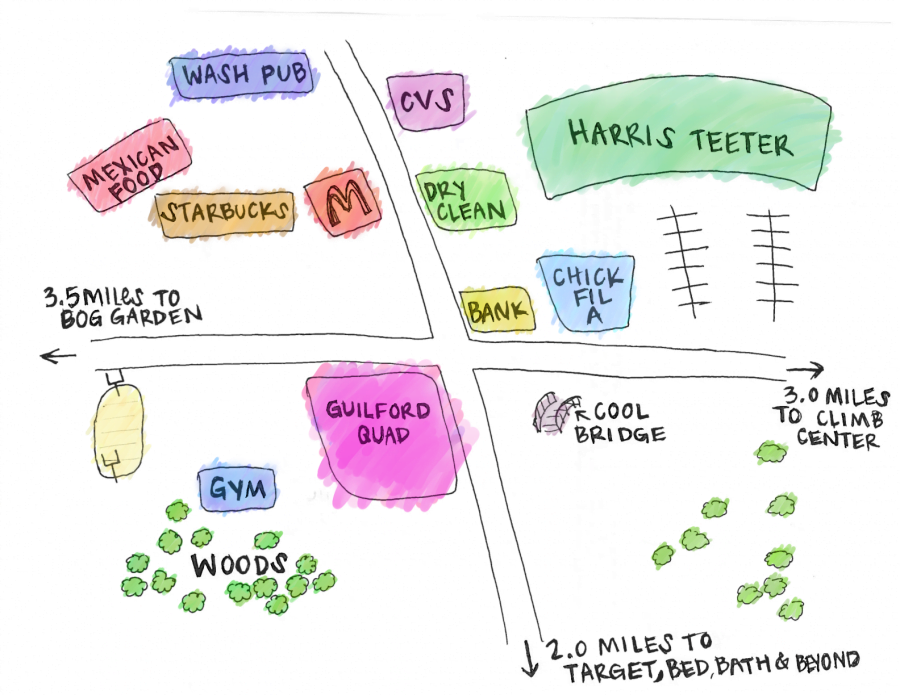I used to dread awkward street crossings. You know, the kind where you have to loiter at the edge of a busy intersection, toeing the sidewalk and trying to look nonchalant as you wait for the lights to change and the “walk” sign to appear? I always feel like people are watching me from their cars.
The walk from one side of the street to the other seems to stretch on to eternity. Why does it feel like a walk of shame? People should be rolling down their windows to applaud me for my environmentally-friendly activity.
I certainly pat myself on my back, thank you very much. I no longer cross intersections awkwardly. I hold my head up high and strut across that walkway (which is preferable since you can see oncoming cars much more easily in this fashion — just a tip).
I’m saving money and the environment by walking. And at Guilford, I’m not giving up much for these benefits.
According to WalkScore.com, a website that evaluates the walkability and access to transportation to various areas, Guilford College is considered “very walkable.” Our area has a walkability score of 80 percent.
The Walk Score algorithm awards points based on the distance to shops and services. Guilford’s score of 80 percent means that most errands can be accomplished on foot. There are enough amenities within reasonable walking distance for an individual not to have to rely on a car.
“Like many people, I don’t have a car, so I like that Quaker Village, Harris Teeter, and other places are within walking distance,” said junior Taylor Seitz.
There are 16 restaurants located less than half a mile from our campus — if you count Starbucks as a restaurant, as WalkScore does.
Can we pause for a moment and reflect on the fact that we are mere yards away from El Atzeca, a Mexican restaurant that offers one-dollar tacos every Tuesday and Thursday? One. Dollar. Tacos. It astounds me that this isn’t included in a Guilford information tour.
Harris Teeter, too, is a 10-minute walk from any dorm on campus, and as I master the art of street crossing, I’m shortening the time by almost half.
There are banks, coffee shops, book stores, bars, clubs, movie theaters, parks, and nearly anything else a college student might want, all within five miles of Guilford.
If you have a bike, the world opens up even more, so driving becomes almost unnecessary. Greensboro’s bike lanes and side streets can get you almost anywhere you want to go, without riding in heavy traffic.
Another advantage: according to health experts, biking five miles burns around 200 calories, depending on your speed. A brisk three-mile walk, which would take just over an hour, burns 400 calories. So if you’re going carless, it helps the environment and your health.
“I like that we have a relatively pedestrian-friendly campus,” Seitz said. “Being able to walk on the trails in the woods is one of my favorite things about Guilford.”
Associate Professor of Political Science Kyle Dell is an avid supporter of going car-less.
“From the back of my door to my campus office is about a twelve-minute bike ride, (and it is) my favorite way to get to campus,” said Dell. “The most car-intensive part of (my) life revolves around the driving (my wife and I) do for the soccer games and practices for my son and daughter.”
Since most of us don’t have children on a soccer team, I think we’ll be fine stashing our car keys in a drawer and pulling on a pair of sneakers or a bike helmet. We will be saving the environment, our budget, and our waistlines all in one swoop. What’s not to love?

